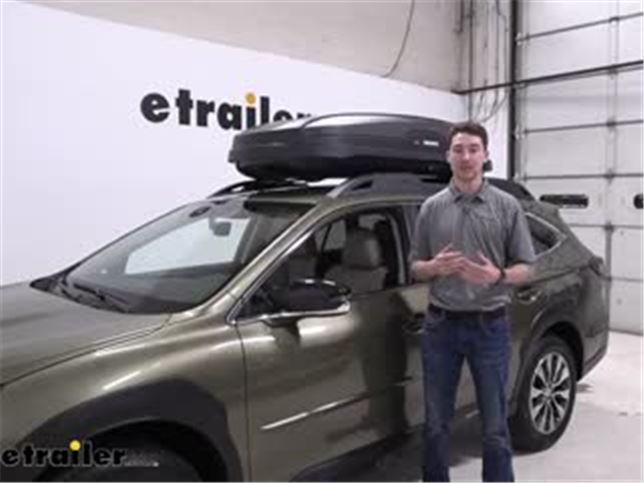In this article, I will guide you step by step on how to install a roof mounted cargo bag on your 2018 Subaru Outback. You will learn the necessary tools and materials needed for the installation, as well as the proper techniques to ensure a secure and stable attachment. By the end, you will have the knowledge and confidence to successfully install a roof mounted cargo bag on your Subaru Outback, allowing you to easily transport additional luggage or gear on your next adventure.
How to Install a Roof Mounted Cargo Bag on a Subaru Outback
If you often find yourself needing extra space for your belongings while traveling, a roof mounted cargo bag could be the perfect solution for your Subaru Outback. With its spacious design and easy installation process, this cargo bag allows you to maximize your vehicle’s storage capacity without compromising the interior space. In this guide, we will walk you through the step-by-step process of choosing, preparing, installing, and utilizing a roof mounted cargo bag on your Subaru Outback. So, let’s get started!
Choosing the Right Roof Mounted Cargo Bag
Considering the Size and Capacity
The first step towards installing a roof mounted cargo bag on your Subaru Outback is to choose the right size and capacity. Consider the amount of extra storage space you need and the items you intend to transport. Measure the available roof space on your vehicle and compare it with the dimensions of different cargo bags. It’s important to ensure that the bag you choose fits securely on your roof without obstructing any antennas or roof racks.
Material and Durability
Another crucial factor to consider when selecting a cargo bag is its material and durability. Look for bags made from high-quality, weather-resistant materials such as nylon or PVC. Ensure that the bag is constructed with sturdy seams and reinforced corners to withstand the rigors of travel. Additionally, check for UV resistance to prevent the bag from fading or deteriorating when exposed to sunlight.
Weatherproof Features
To protect your belongings from the elements, consider a cargo bag that offers weatherproof features. Look for bags with waterproof zippers, double-stitched seams, and integrated storm flaps to keep your items dry during rain or snow. Some cargo bags also come with built-in fabric or covers to provide additional protection against extreme weather conditions.
Preparing the Subaru Outback for Installation
Checking the Roof Rack Compatibility
Before installing a roof mounted cargo bag, it’s essential to check whether your Subaru Outback is equipped with a roof rack. Most cargo bags require a roof rack to attach securely to the vehicle. Consult your vehicle’s manual or check with the manufacturer to ensure the roof rack is compatible. If your Outback does not have a roof rack, you may need to purchase one separately.
Cleaning and Inspecting the Roof Surface
To guarantee a secure and stable installation, it is crucial to clean and inspect the roof surface of your Subaru Outback. Remove any dust, dirt, or debris using a gentle soap solution and a soft-bristle brush. Inspect the roof for any signs of damage, including scratches or dents, that may affect the cargo bag’s stability. Repair or address any issues before proceeding with the installation.
Gathering the Necessary Tools
Before installing the cargo bag, gather all the necessary tools. These may include a wrench or screwdriver to assemble the roof rack (if required), straps or bungee cords for securing the bag, and a step stool or ladder to access the roof of your vehicle comfortably. Having all the required tools on hand will streamline the installation process and ensure a hassle-free experience.
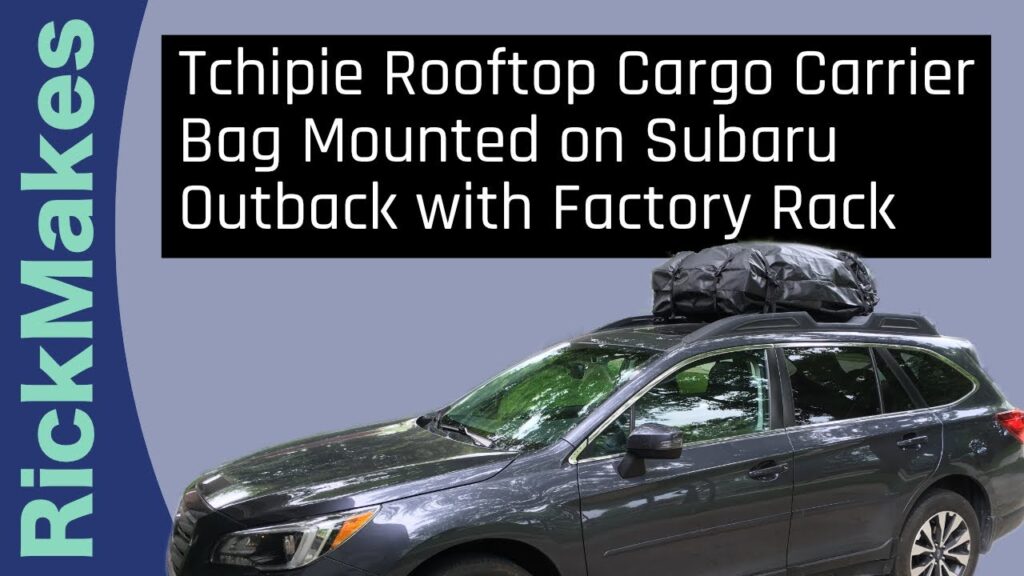
This image is property of i.ytimg.com.
Installing the Roof Rack if Needed
Identifying and Assembling the Roof Rack Components
If your Subaru Outback does not have a roof rack, you will need to purchase one separately and install it before attaching the cargo bag. Identify all the components of the roof rack, including crossbars, towers, and attachments. Refer to the roof rack manufacturer’s instructions to assemble the components correctly and securely. Take your time during this step to ensure a stable and safe roof rack installation.
Mounting the Roof Rack on the Subaru Outback
Once you have assembled the roof rack components, it’s time to mount it on your Subaru Outback. Position the crossbars on the roof according to the manufacturer’s instructions, ensuring they are evenly spaced and parallel to each other. Use the provided tools to tighten the roof rack securely onto the roof. Double-check that the roof rack is stable and can withstand the weight of the cargo bag and its contents.
Positioning and Securing the Cargo Bag
Determining the Optimal Position on the Roof
To ensure optimal aerodynamics and load distribution, it’s important to position the cargo bag correctly on the roof of your Subaru Outback. Place the bag towards the rear end of the roof rack, leaving enough space for the front bar or antenna if present. Opt for a position that does not obstruct the driver’s view or interfere with the vehicle’s performance.
Placing the Cargo Bag on the Roof Rack
Once you have determined the optimal position, place the cargo bag on the roof rack. Align the bag with the crossbars and make sure it is centered and symmetrical. Some cargo bags come with integrated straps or clips that attach directly to the roof rack, while others require separate straps or bungee cords to secure the bag in place.
Securing the Cargo Bag Properly
To ensure a secure and safe installation, it’s crucial to properly secure the cargo bag to the roof rack. Start by tightening the straps or bungee cords, ensuring they are snug but not overly tight. Avoid overloading the cargo bag, as this can affect its stability and increase the risk of damage to your belongings. Double-check that the bag is securely fastened before hitting the road.
This image is property of assets.weathertech.com.
Securing and Protecting the Contents of the Cargo Bag
Using Straps and Buckles to Secure the Bag
Once you have securely installed the cargo bag on the Subaru Outback, it’s time to secure and protect the contents inside. Most cargo bags come with integrated straps or buckles that help to keep the items in place during travel. Utilize these features to secure your belongings and prevent them from shifting or falling out, especially when driving on uneven or bumpy roads.
Utilizing Additional Protective Measures
To further protect the contents of your cargo bag, consider using additional protective measures. Use soft padding or blankets to wrap fragile items and prevent them from bumping into each other. Place heavier or sturdier items at the bottom of the bag to provide a stable base. Additionally, consider using waterproof storage containers or vacuum-sealed bags for extra protection against water damage.
Securing Fragile or Delicate Items
If you are transporting fragile or delicate items in your cargo bag, take extra precautions to secure them properly. Wrap these items individually in bubble wrap or packing paper and place them in the center of the bag. Use additional straps or bungee cords to firmly secure them and prevent any movement or shifting during transit.
Utilizing the Features of the Roof Mounted Cargo Bag
Utilizing Compartments and Storage Pockets
Many roof mounted cargo bags come with compartments or storage pockets that allow for better organization and easy access to your belongings. Take advantage of these features by categorizing your items and storing them accordingly. This will not only help you find what you need quickly but also prevent smaller items from getting lost or misplaced.
Understanding Zippers and Closures
Familiarize yourself with the zippers and closures of the cargo bag to ensure hassle-free access to your belongings. Test the zippers before your trip to ensure they are functioning smoothly and not sticking or getting caught. Check for any damaged or missing zipper teeth and replace if necessary. Familiarize yourself with the bag’s closure system, such as buckles or Velcro, to ensure proper closure and protection of your items.
Using Tie-Down Points and Loops
Some roof mounted cargo bags come with built-in tie-down points or loops that provide additional security and stability. Take advantage of these features by attaching extra straps or bungee cords to the anchor points. This will prevent any movement or shifting of the bag during transit, particularly when driving at higher speeds or in windy conditions.
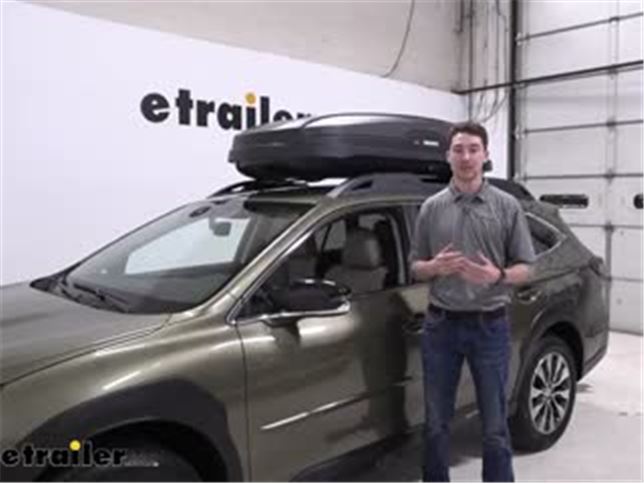
This image is property of www.etrailer.com.
Maintaining and Cleaning the Roof Mounted Cargo Bag
Regular Cleaning and Maintenance
To prolong the lifespan of your roof mounted cargo bag and ensure its optimal performance, regular cleaning and maintenance are essential. After each trip, remove any dirt or debris from the bag’s exterior using a soft brush or cloth. If the bag becomes heavily soiled, follow the manufacturer’s instructions for cleaning. Regularly inspect the bag for any signs of wear or damage, such as frayed straps or torn fabric, and repair or replace as needed.
Addressing Stains and Spills
In the event of stains or spills on your cargo bag, it’s important to address them promptly. Use mild soap and water to clean the affected area, gently blotting rather than rubbing the fabric. Avoid using harsh chemicals or abrasive cleaners, as they can damage the bag’s material. Allow the bag to air dry thoroughly before storing it.
Proper Storage and Care
When not in use, it’s essential to store the roof mounted cargo bag properly. Clean and dry the bag completely before folding or rolling it for storage. Store the bag in a cool, dry place away from direct sunlight, extreme temperatures, or moisture to prevent damage or mold growth. Avoid placing heavy objects on top of the bag, as this can distort its shape or cause unnecessary pressure on the fabric.
Ensuring Safety and Load Distribution
Understanding Weight Distribution and Limitations
To ensure safe and comfortable driving, it’s crucial to understand weight distribution and limitations when using a roof mounted cargo bag. Distribute the weight of your belongings evenly inside the bag, placing heavier items towards the center and sides to maintain balance. Avoid exceeding the recommended weight limit specified by the manufacturer, as it can negatively impact the vehicle’s handling and stability.
Minimizing Wind Resistance and Impact on Vehicle Handling
A roof mounted cargo bag can increase wind resistance and affect your vehicle’s handling, especially at higher speeds. To minimize these effects, ensure the cargo bag is tightly secured and positioned correctly on the roof. Consider opting for a sleek, aerodynamic design that reduces drag and wind noise. Additionally, avoid overloading the bag and remove it when not in use to reduce wind resistance and improve fuel efficiency.
Checking Load Stability During Travel
During long trips, it’s essential to periodically check the stability of the cargo bag and its contents. Make stops at regular intervals to inspect the straps or buckles, ensuring they remain securely tightened. Check for any signs of shifting or movement of the bag or its contents. If necessary, adjust the straps or redistribute the weight to maintain stability and minimize any potential hazards.
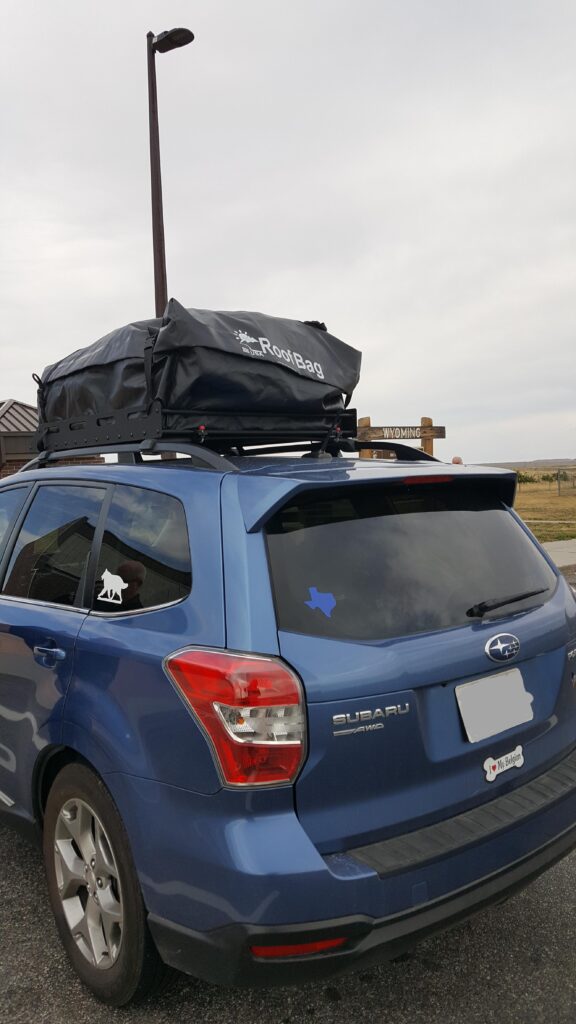
This image is property of i.redd.it.
Taking Precautions while Installing the Cargo Bag
Following Manufacturer’s Instructions
Always follow the manufacturer’s instructions when installing a roof mounted cargo bag on your Subaru Outback. Each bag may have specific installation instructions and safety precautions. Failure to follow these instructions can lead to improper installation, reduced stability, and potential damage to your vehicle or belongings.
Working with a Partner for Assistance
Installing a roof mounted cargo bag on your own can be challenging and potentially unsafe. It’s recommended to seek assistance from a partner or someone who can help you with the installation process. They can provide additional support and ensure that the bag is properly positioned and secured.
Being Aware of Potential Hazards
While installing a roof mounted cargo bag is generally safe, it’s important to be aware of potential hazards. Ensure that you are working on a level and stable surface when installing the roof rack or securing the cargo bag. Use a step stool or ladder to access the roof of your vehicle safely. Be cautious of any overhead obstacles, such as low clearances or branches, that may obstruct the installation process.
Conclusion
Installing a roof mounted cargo bag on your Subaru Outback is a convenient and practical way to increase your vehicle’s storage capacity. By following the steps outlined in this guide, you can successfully choose, prepare, install, and utilize a cargo bag to accommodate your travel needs. Remember to consider the size, capacity, and weatherproof features of the bag, as well as to properly secure and protect your belongings during transit. With the right precautions and maintenance, your roof mounted cargo bag will enhance your Subaru Outback’s versatility and make your journeys more enjoyable.
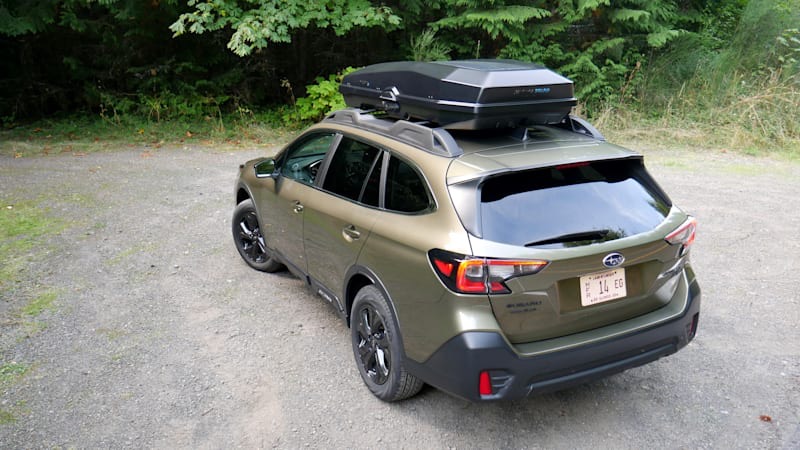
This image is property of towingless.com.

